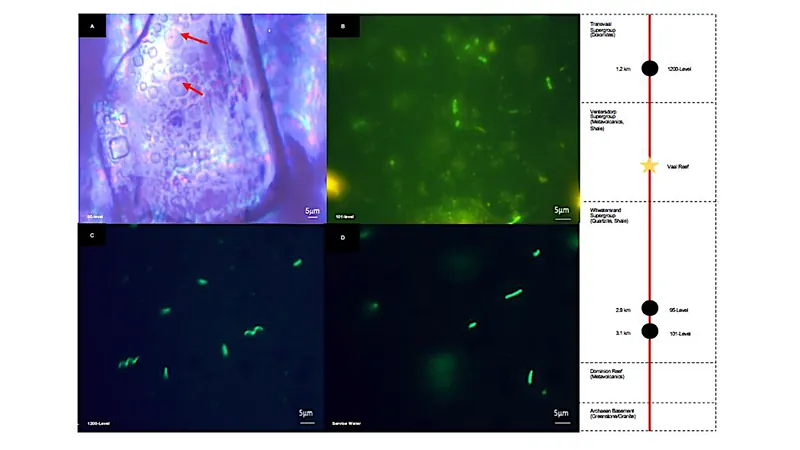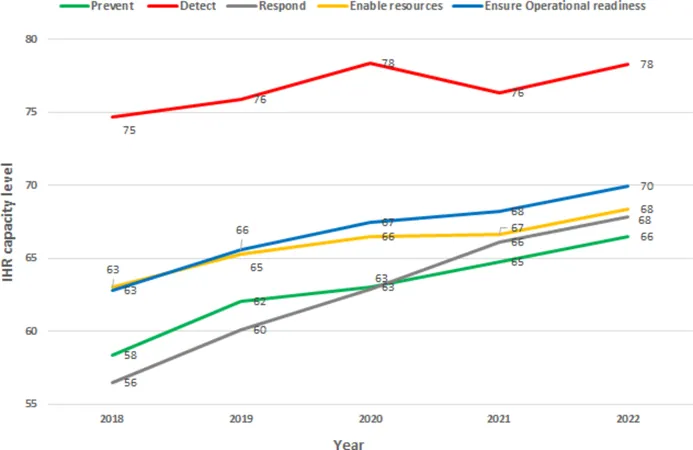
Unveiling Life in Ancient Brines: Could Deep Underground Systems Host Microbial Life?
2024-11-07
Author: Arjun
Introduction
Long-isolated subsurface brine environments, preserved for millions of years, present a unique possibility for microbial life to thrive. Recent research focusing on brines extracted from depths of 3.1 kilometers within South Africa's Moab Khotsong mine has shed light on this enigmatic ecosystem. This study could unlock a better understanding of how life operates under extreme conditions and potentially indicate similar environments elsewhere in the universe.
Microbial Inventory
Within this microbial inventory, researchers have uncovered taxonomic and metabolic profiles from 95 single-cell amplified genomes (SAGs). These genomes were gathered from an incredibly low biomass community, with cell concentrations ranging between 103 and 104 cells/mL in the hypersaline brine, which boasts a salinity level of 246 g/L. The analysis revealed that a remarkable majority of these genomes traced back to three halophilic families: Halomondaceae (58%), Microbacteriaceae (24%), and Idiomarinaceae (8%). This diversity stands out starkly from any microbial families identified in other water sources analyzed in the same mining area, such as service water and a less saline dolomite aquifer.
Metabolic Capabilities
Functional annotations point to the presence of robust metabolic modules capable of aerobic heterotrophy, including oxidative processes for organic acids and xenobiotics, as well as fermentation, denitrification, and thiosulfate oxidation. Such findings suggest these microorganisms are adept at surviving in a microoxic environment, showcasing a metabolic resilience that contributes to sustaining life in extreme brine conditions.
Degradation and Synthesis Mechanisms
Moreover, the study highlights mechanisms for degradation of complex organics and the synthesis of vital components such as amino acids and nucleotides. The research proposes that microbial metabolism in these ancient subterranean fluids is powered by radiolytically generated substrates and oxygen. This intriguing interplay of chemistry and biology implies that subsurface brines with high levels of radionuclides could be considered not just as extreme environments but potentially habitable landscapes preserving life across vast geological timescales.
Implications for Astrobiology
The findings are crucial not only for understanding microbial ecology on Earth but also for advancing the search for life beyond our planet. As researchers ponder the implications of such ancient brine systems, the door opens wider to our understanding of biochemistry in extraterrestrial environments, marking significant steps for astrobiology.
Conclusion
Could these underground ecosystems hold the key to understanding ancient life forms on Earth? Or are they a glimpse into the microbial landscapes that might be waiting to be discovered on other celestial bodies? As research progresses, the answers are likely just beneath the surface.



 Brasil (PT)
Brasil (PT)
 Canada (EN)
Canada (EN)
 Chile (ES)
Chile (ES)
 España (ES)
España (ES)
 France (FR)
France (FR)
 Hong Kong (EN)
Hong Kong (EN)
 Italia (IT)
Italia (IT)
 日本 (JA)
日本 (JA)
 Magyarország (HU)
Magyarország (HU)
 Norge (NO)
Norge (NO)
 Polska (PL)
Polska (PL)
 Schweiz (DE)
Schweiz (DE)
 Singapore (EN)
Singapore (EN)
 Sverige (SV)
Sverige (SV)
 Suomi (FI)
Suomi (FI)
 Türkiye (TR)
Türkiye (TR)